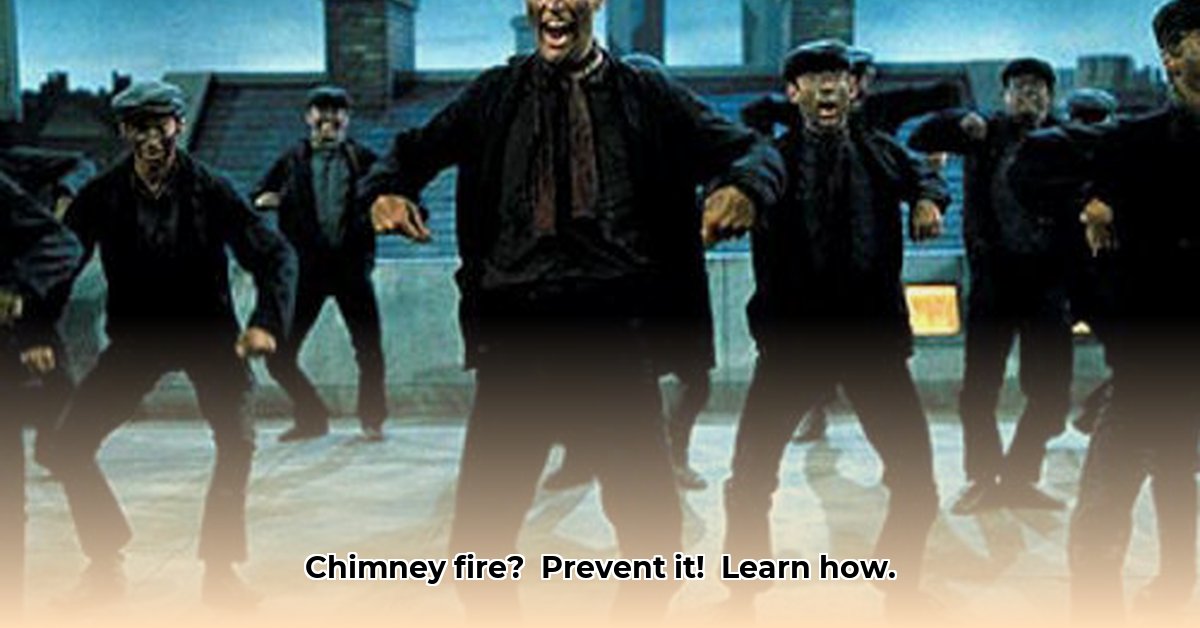
Chimney Sweepers: Your Home's Silent Firefighters
Think your chimney is just a hole in the roof? Think again! A neglected chimney poses a significant fire risk, potentially leading to devastating consequences. This guide isn't just about cleaning; it's about ensuring your family's safety and protecting your home. We'll cover choosing a qualified chimney sweep, preventative maintenance, recognizing warning signs, and understanding the importance of professional services.
The Scary Truth About Chimney Fires
Chimney fires are a serious threat. Thousands of house fires annually are directly linked to chimney problems. The devastation—loss of belongings, potential for injury, and emotional toll—is immense. But with proactive maintenance, these tragedies are largely preventable.
Preventative Maintenance: Essential for Home Safety
Regular chimney inspections are crucial, much like regular car maintenance. Annual inspections by certified chimney sweepers aren't just about cleaning soot; they identify potential problems before they become major (and costly) disasters. Early detection saves money and, more importantly, protects your family. Shouldn't your family's safety be your top priority?
Choosing the Right Chimney Sweep: A Critical Decision
Finding a reliable chimney sweep is as important as the inspection itself. Look for certified professionals, ideally with Chimney Safety Institute of America (CSIA) certification, demonstrating adherence to training and safety standards. Check online reviews and seek word-of-mouth recommendations. A good chimney sweep will readily answer your questions, prioritizing your safety.
What to Expect During a Chimney Inspection
A thorough inspection involves:
- Flue Condition: Examining the flue (inside of the chimney) for cracks, blockages (like bird nests), and deterioration. A damaged flue is a fire hazard.
- Masonry Integrity: Checking for cracks, crumbling bricks, or damage compromising stability. A weak chimney is dangerous.
- Creosote Buildup: Assessing the level of creosote (a highly flammable byproduct of wood burning). Higher buildup equals higher risk.
- Chimney Cap Condition: Checking the cap for cracks or missing pieces. Damage can lead to water damage, weakening the chimney structure.
- Appliance Connections: Inspecting gas appliance connections for proper venting to prevent dangerous gas buildup.
Your Chimney Safety Checklist: Five Simple Steps
Protecting your home is easier than you think:
- Annual Inspection: Schedule a yearly inspection like a doctor's appointment. Don't wait for problems.
- Certified Professional: Choose a CSIA-certified sweep for assurance of thoroughness and safety.
- Prompt Repairs: Address any identified problems immediately. Don't procrastinate.
- Maintain Your Fireplace: Keep your fireplace clean and free of debris to reduce creosote buildup.
- Educate Yourself: Learn about warning signs. Knowledge is power. Wouldn't knowing the signs of a chimney fire risk save you from a potentially devastating scenario?
Warning Signs: Don't Ignore These Red Flags
Be alert for:
- Excessive Smoke: More smoke than usual suggests a flue blockage.
- Soot Buildup: Visible soot inside or outside is a major red flag.
- Chimney Cracks: Cracks indicate serious structural problems needing immediate attention.
- Animal Activity: Nests or droppings indicate potential blockages and fire hazards.
- Unusual Smells: Burning smells, even without fireplace use, warrant investigation.
How to Choose a Certified Chimney Sweep
Key Takeaways:
- Qualified chimney sweeps are essential for home safety.
- Prioritize CSIA certification, insurance, and a strong track record.
- Regular annual inspections are vital preventative maintenance.
- Understanding service offerings is key to effective comparison.
Why Regular Chimney Inspections Matter
Creosote buildup is a silent danger. A thorough inspection identifies hazards, preventing costly repairs or fires. Proactive maintenance is far safer and cheaper than reactive repairs. Did you know that a routine chimney inspection can save you thousands of dollars in the long run?
How to Choose the Right Chimney Sweep
- Seek Certification: Look for CSIA certification.
- Verify Insurance: Ensure liability insurance coverage.
- Check Reviews and References: Online reviews and references provide valuable insights.
- Compare Quotes and Services: Obtain multiple quotes comparing pricing and services.
- Ask Questions: Don't hesitate to ask about experience, equipment, and procedures.
Understanding the Services Offered
Services include inspection, cleaning, and repairs. Some sweeps offer bundled packages for better value. What services are most important to you when it comes to protecting your home from fire hazards?
What to Look Out For
Avoid sweeps lacking CSIA certification or insurance, providing vague quotes, rushing the process, or being unwilling to answer questions. Choosing the right professional is about peace of mind—knowing your home and family are protected.